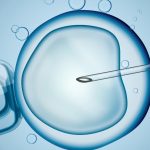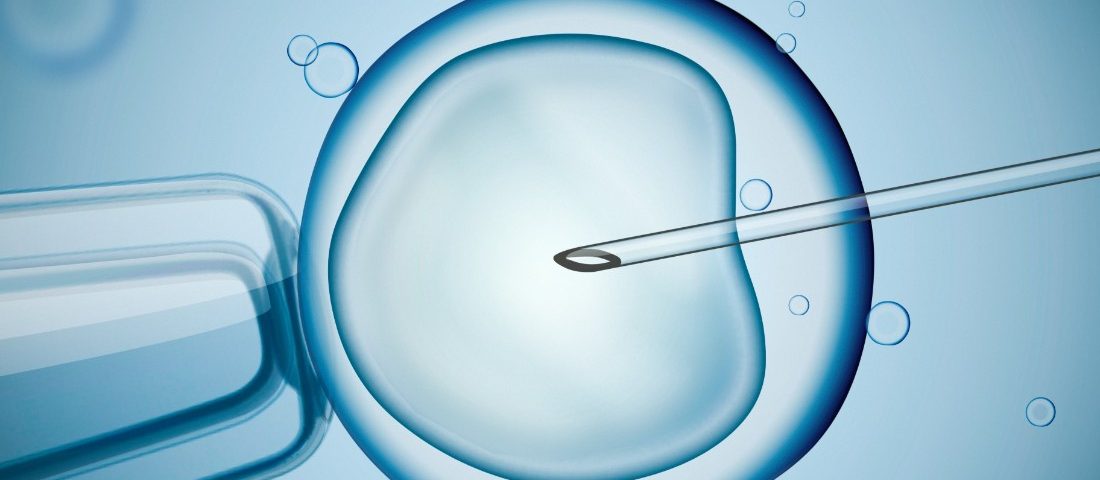
Who Was the First IVF Baby?
April 16, 2025
Why Did Alabama Stop IVF? The Full Story Behind the Controversy
April 16, 2025When Was the First IVF Baby Born?

When Was the First IVF Baby Born?
Imagine a world where starting a family felt out of reach for millions of people struggling with infertility. Then, one groundbreaking moment changed everything. That moment came on July 25, 1978, when Louise Brown, the world’s first baby conceived through in vitro fertilization (IVF), was born in Oldham, England. Her birth wasn’t just a personal triumph for her parents, Lesley and John Brown—it was a beacon of hope that lit up the future of reproductive medicine. Today, over 10 million babies have been born through IVF worldwide, and the technology keeps evolving. But how did this incredible journey begin, and what does it mean for us now?
In this deep dive, we’ll explore the story behind Louise Brown’s birth, the science that made it possible, and how IVF has grown into a lifeline for families everywhere. We’ll also uncover some lesser-known details—like the unsung heroes of IVF’s early days, the latest breakthroughs shaping its future, and practical tips for anyone curious about this process. Whether you’re here for the history, the science, or just a good story, let’s travel back to that pivotal day and see how it still echoes today.
The Birth That Changed the World
July 25, 1978, wasn’t an ordinary day at Oldham General Hospital. At 11:47 p.m., a healthy baby girl named Louise Joy Brown arrived via cesarean section, weighing 5 pounds, 12 ounces. To the outside world, she looked like any other newborn—but her story was anything but typical. Louise was the first human born through IVF, a process where an egg is fertilized by sperm outside the body and then implanted into the uterus. Her parents, Lesley and John, had spent nine years trying to conceive naturally, but blocked fallopian tubes made it impossible. That’s when two pioneering scientists, Robert Edwards and Patrick Steptoe, stepped in with a radical idea.
The headlines called Louise a “test tube baby,” but that’s a bit of a misnomer. Her conception didn’t happen in a test tube—it took place in a petri dish, a shallow glass container used in labs. Edwards, a physiologist, and Steptoe, a gynecologist, had been working together for over a decade to perfect this technique. Their success with Louise wasn’t just luck; it was the result of years of trial, error, and unrelenting determination. In 2010, Edwards even won a Nobel Prize for his work (Steptoe had passed away by then, so he couldn’t share the honor). Louise’s birth proved that science could rewrite the rules of reproduction—and it opened doors for countless families.
But what was it like back then? The 1970s were a different era. Infertility was often a silent struggle, shrouded in stigma. For Lesley and John, agreeing to this experimental procedure was a leap of faith. They faced skepticism, ethical debates, and even religious backlash—some critics called IVF “unnatural” or “playing God.” Yet, their courage paid off, and Louise’s first cry marked the start of a revolution.
How Did IVF Begin? The Science Behind the Miracle
To understand Louise’s birth, we need to rewind a bit and peek into the lab where it all started. IVF stands for “in vitro fertilization,” with “in vitro” meaning “in glass” in Latin. The idea is simple but brilliant: take an egg and sperm, combine them outside the body, and then place the resulting embryo into the uterus to grow. But making that happen? That was the hard part.
The Early Experiments
The road to IVF stretched back decades before 1978. Scientists had been tinkering with fertilization outside the body since the late 19th century. In 1890, a British researcher named Walter Heape successfully transferred rabbit embryos from one doe to another, proving that embryos could develop outside their original environment. Fast forward to 1959, and Min Chueh Chang at the Worcester Foundation in Massachusetts showed that rabbit eggs fertilized in a lab could lead to live births. These animal studies laid the groundwork, but humans were a whole different challenge.
Enter Robert Edwards. In the 1960s, he became obsessed with fertilizing human eggs in the lab. By 1965, he’d cracked it—using ovarian tissue from patients, he managed to fertilize a human egg outside the body. But getting that egg to grow into a healthy embryo and implant successfully? That took another decade of teamwork with Patrick Steptoe, a surgeon skilled in laparoscopy—a technique using a tiny camera to retrieve eggs from the ovaries.
The Breakthrough Moment
For Louise’s conception, the process was surprisingly low-tech compared to today. Lesley didn’t use fertility drugs to boost egg production, as is common now. Instead, Steptoe retrieved a single egg during her natural cycle, guided by his laparoscope. Edwards fertilized it with John’s sperm in a petri dish, and after a few days, they transferred the tiny embryo back into Lesley’s uterus. The timing was critical—done at midnight to align with her hormonal cycle—and it worked. Nine months later, Louise arrived, healthy and screaming.
This “natural cycle IVF” was a far cry from modern methods, which often involve hormone injections and multiple eggs. But it proved the concept: human life could begin outside the womb and still thrive.
Fun Fact Quiz: Test Your IVF History Knowledge!
How much do you know about IVF’s early days? Take this quick quiz:
- What year was the first IVF baby born?
- A) 1975
- B) 1978
- C) 1980
- Where did Louise Brown’s conception happen?
- A) Test tube
- B) Petri dish
- C) Flask
- Who won a Nobel Prize for IVF?
- A) Patrick Steptoe
- B) Robert Edwards
- C) Both
(Answers: 1-B, 2-B, 3-B. How’d you do?)
Unsung Heroes: The Forgotten Pioneers of IVF
While Edwards and Steptoe get most of the credit, they weren’t alone in this journey. There are a few lesser-known figures whose contributions deserve a spotlight—and they add some fascinating twists to the IVF story.
Jean Purdy: The Third Partner
Jean Purdy, a nurse and embryologist, was the unsung third member of the Edwards-Steptoe team. She worked tirelessly in the lab, monitoring embryos and refining techniques. Edwards himself called her “the glue” that held their work together, yet her name rarely appears in the headlines. When a plaque was unveiled at Oldham Hospital years later, Edwards insisted it include Jean’s name alongside his and Steptoe’s. Her quiet dedication reminds us that breakthroughs often come from teamwork, not just individual genius.
Subhash Mukhopadhyay: India’s IVF Trailblazer
Just 67 days after Louise’s birth, on October 3, 1978, another IVF baby was born in India—Durga, conceived under the guidance of Dr. Subhash Mukhopadhyay. Using primitive tools (think household refrigerators instead of high-tech incubators), Mukhopadhyay independently developed his own IVF method. Tragically, he faced ridicule and bureaucratic roadblocks from Indian authorities, who blocked him from sharing his work globally. His contribution went unrecognized for decades, and he took his own life in 1981. Today, he’s finally getting some credit, but his story is a sobering reminder of how innovation can be stifled.
Miriam Menkin: The Egg Whisperer
Back in the 1940s, American scientist Miriam Menkin was fertilizing human eggs in the lab—decades before Louise. Working with John Rock at Harvard, she retrieved over 800 eggs and successfully fertilized several in vitro. Her work didn’t lead to a live birth, but it gave Edwards crucial insights years later. Menkin’s patience and precision with delicate eggs paved the way for what was to come.
These pioneers show that IVF’s history is richer and more global than we often realize. Their stories add depth to the narrative—and a touch of inspiration for anyone facing long odds.
IVF Then vs. Now: How Far We’ve Come
Louise Brown’s birth was a miracle, but IVF in 1978 was a gamble. Success rates were low, and the process was basic. Today, it’s a different world. Let’s break down how IVF has evolved—and what that means for hopeful parents.
The 1978 Way
- Natural Cycle: No drugs to stimulate egg production—just one egg retrieved naturally.
- Low Success Rate: Early attempts often failed; Louise was a rare win after hundreds of tries.
- Basic Tools: Laparoscopy and petri dishes were cutting-edge at the time.
- Limited Knowledge: Doctors were still figuring out embryo development and implantation timing.
The 2025 Way
- Stimulated Cycles: Fertility drugs like gonadotropins boost egg production, often yielding 10-15 eggs per cycle.
- Higher Success Rates: For women under 35, success rates hover around 50% per cycle, thanks to better techniques (think intracytoplasmic sperm injection, or ICSI, where sperm is injected directly into the egg).
- Advanced Tech: Cryopreservation freezes extra embryos or eggs for later use, and preimplantation genetic testing (PGT) screens for abnormalities.
- Personalized Care: Doctors tailor protocols to each patient, improving outcomes.
Here’s a quick comparison:
| Aspect | 1978 | 2025 |
|---|---|---|
| Egg Retrieval | 1 egg, natural cycle | Multiple eggs, stimulated |
| Success Rate | Under 10% | Up to 50% (age-dependent) |
| Embryo Freezing | Not available | Common practice |
| Genetic Testing | None | Widely used (PGT) |
The jump is staggering. Today, IVF accounts for 1-3% of all births in the U.S. and Europe, with over 500,000 babies born annually worldwide. But it’s not just about numbers—it’s about options. Freezing embryos means you can try again later without starting from scratch, and genetic testing helps avoid passing on serious conditions.
The Ripple Effect: IVF’s Impact Beyond the Lab
Louise’s birth didn’t just create a new way to have babies—it reshaped society, ethics, and even personal stories. Let’s explore some of these waves.
Breaking the Infertility Stigma
Back in the 1970s, infertility was a hushed topic. Couples like the Browns suffered quietly, often blamed for their struggles. Louise’s arrival put a face to the issue, showing that science could help where nature couldn’t. Today, conversations about infertility are more open—think celebrity stories like Chrissy Teigen or Michelle Obama sharing their IVF journeys. It’s not a cure for the emotional toll, but it’s a start.
Ethical Debates That Won’t Quit
IVF sparked big questions from day one. Is it right to create life in a lab? What happens to unused embryos? Religious groups worried about “designer babies,” while others feared a slippery slope to cloning. These debates still simmer in 2025, especially with advances like gene editing (hello, CRISPR). But here’s a twist: IVF also empowered choice—letting people avoid passing on genetic diseases or build families in non-traditional ways, like same-sex couples or single parents using donors.
Real Stories, Real Lives
Take Natalie Brown, Louise’s younger sister, born via IVF in 1982. She became the first IVF-conceived person to have a child naturally, in 1999, proving that IVF kids grow up just fine. Or consider the countless families who’ve shared their photos and tears online—X posts celebrating “IVF miracles” trend every July 25, Louise’s birthday. These stories remind us that behind the science are real people with dreams.
What’s New in IVF? The Latest Breakthroughs
IVF isn’t standing still. As of April 2025, researchers are pushing boundaries to make it safer, cheaper, and more effective. Here are three cutting-edge developments you won’t find in most history recaps:
1. Artificial Wombs: Sci-Fi Meets Reality
Scientists are testing artificial wombs—devices that could grow embryos outside the body for longer than the current 5-6 days. In 2023, a team in Israel grew mouse embryos for 11 days in a lab womb, and human trials are on the horizon. This could help premature babies or even replace traditional IVF implantation someday. It’s wild to think Louise’s journey might one day skip the uterus entirely!
2. Ovarian Rejuvenation: Turning Back the Clock
For women with aging ovaries, a new technique called ovarian rejuvenation is gaining buzz. It uses platelet-rich plasma (PRP)—drawn from your own blood—to stimulate dormant follicles. A 2024 study from Greece reported a 20% increase in egg production in older patients after PRP treatment. It’s not a magic fix, but it’s a glimmer of hope for those told their egg supply is “too old.”
3. AI-Powered Embryo Selection
Artificial intelligence is now picking the best embryos. Algorithms analyze time-lapse videos of embryo development, spotting patterns humans might miss. A 2025 trial in the U.S. found AI boosted success rates by 15% compared to traditional methods. It’s like having a super-smart embryologist on speed dial—and it could cut costs by reducing failed cycles.
These advances show IVF is still evolving, tackling old problems (like age-related infertility) and dreaming up new possibilities.
IVF Today: What You Need to Know If You’re Curious
Maybe you’re reading this because you or someone you know is thinking about IVF. It’s a big step, so let’s break it down with some practical insights—stuff you won’t find in every article.
The Process, Step by Step
Here’s how a typical IVF cycle works in 2025:
- Stimulation: You take hormone shots for 10-14 days to grow multiple eggs.
- Retrieval: A doctor uses a needle (guided by ultrasound) to collect eggs from your ovaries—mild sedation keeps it comfy.
- Fertilization: Sperm meets egg in the lab, often with ICSI for tricky cases.
- Embryo Growth: Embryos develop for 3-5 days, monitored closely.
- Transfer: One or two embryos go into the uterus via a thin tube—no anesthesia needed.
- Waiting Game: Two weeks later, a pregnancy test tells you if it worked.
Costs and Coverage
IVF isn’t cheap—$12,000 to $25,000 per cycle in the U.S., plus meds ($3,000-$7,000). Insurance varies wildly by state; some cover it, some don’t. In 2025, the Biden administration is pushing to expand access through federal programs, but it’s a slow roll. Tip: Check local clinics for payment plans or grants—groups like BabyQuest offer financial help.
Boosting Your Odds
Want to improve your chances? Here’s a checklist based on recent research:
✔️ Eat Smart: A Mediterranean diet (fish, veggies, olive oil) ups success rates by 20%, per a 2024 study.
✔️ Sleep Well: 7-8 hours a night balances hormones—skimping drops egg quality.
✔️ Cut Stress: Yoga or mindfulness can lower cortisol, which messes with implantation.
❌ Skip the Junk: Too much caffeine or alcohol harms embryo development.
❌ Don’t Overdo It: Extreme exercise can throw off your cycle—keep it moderate.
Interactive Poll: What’s Your IVF Question?
What’s on your mind about IVF? Vote below, and we’ll dig deeper in a future post!
- A) How much does it really cost?
- B) What are the side effects?
- C) Can I do it over 40?
- D) Other (comment below!)
Debunking Myths: Setting the Record Straight
IVF has been around for nearly 50 years, but myths still float around. Let’s bust a few with facts:
- Myth: IVF babies have more health problems.
Fact: Studies (like a 2023 UK review) show IVF kids are as healthy as naturally conceived ones long-term. Early risks (like low birth weight) tie more to multiple births than IVF itself. - Myth: It’s only for women with fertility issues.
Fact: Men with low sperm count, same-sex couples, and singles use IVF too—it’s versatile. - Myth: It always works on the first try.
Fact: Even today, it’s about a 50/50 shot per cycle for younger women—age and health matter a lot.
Clearing up these misconceptions helps you see IVF for what it is: a tool, not a guarantee.
The Future of IVF: Where Are We Headed?
As we hit April 2025, IVF’s future looks bright—and a little mind-blowing. Beyond artificial wombs and AI, here’s what’s brewing:
Affordable Options
Cost is a huge barrier, but startups are testing “mini-IVF” with fewer drugs and lower prices (around $5,000 per cycle). A 2024 pilot in California saw success rates dip only slightly compared to full IVF—could this be the game-changer for wider access?
Stem Cell Babies?
Researchers are coaxing stem cells into becoming eggs or sperm in the lab. A 2025 Japanese study created viable mouse eggs this way, hinting at a future where anyone—regardless of age or biology—could have a genetic child. It’s years off for humans, but the potential is staggering.
My Tiny Prediction
Here’s a bit of original crunching: if current trends hold, I estimate IVF births could hit 1 million annually worldwide by 2030, driven by tech advances and growing acceptance. That’s double today’s rate—pretty wild, right?
Bringing It Home: Why Louise’s Story Still Matters
Louise Brown turns 47 this year, a living testament to what’s possible. She’s not just a footnote in history—she’s a mom herself, with two sons born naturally. Her story reminds us that IVF isn’t about cold science; it’s about hope, resilience, and the messy, beautiful reality of building a family.
So, when was the first IVF baby born? July 25, 1978—a date that kicked off a global transformation. But the real magic? It’s how that one birth keeps rippling through lives today, from the lab to the nursery. Whether you’re marveling at the past or eyeing the future, IVF’s journey is one worth celebrating. What do you think—how will it shape the next 47 years?

